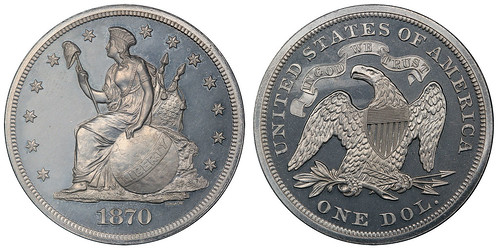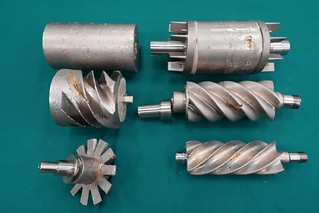
PREV ARTICLE
NEXT ARTICLE
FULL ISSUE
PREV FULL ISSUE
LOOSE CHANGE: APRIL 21, 2024Here are some additional items in the media this week that may be of interest. -Editor In the monetary-chicken-and-egg department, this article asks which came first: barter or money. -Editor
Adam Smith tried to tell us that money was not invented by governments. Money, and economic life entire, come from
Although many economists have told the
The trouble is, as anthropologist Caroline Humphrey points out,
Barter societies, where they exist at any scale, are what happens (initially, briefly) to societies that once used money after their central government collapses. So, while economists would have you believe that barter initially arises from
To read the complete article, see:
A PCGS article by Charles Jonath examines Longacre's Indian Princess dollars. -Editor In the captivating chapters of American numismatic history, few names shine as brilliantly as James Barton Longacre's. A virtuoso engraver and the esteemed chief engraver of the United States Mint during the mid-19th century, Longacre contributed artistic work for our nation's coinage at measure that is nothing short of legendary. Numismatic researchers and collectors alike are well-acquainted with the fact that William Barber, just a year after Longacre's passing in 1869, brought the Longacre Indian Princess design patterns to life. The U.S. Mint embarked on a remarkable journey to craft a series of pattern coins as a tribute to the great James Longacre. These coins were destined for select collectors, esteemed government officials, and even foreign dignitaries. Among these, the inaugural pieces were the dollars, featuring various renditions of Longacre's iconic Indian Princess design. This departure from the conventional Greco-Roman portrayal of Lady Liberty, instead depicting her as a Native American woman, was a truly revolutionary and pioneering choice. This choice was influenced by the mid-19th-century fascination with Native American culture and the desire to forge a uniquely American identity. This spectacular dollar series comprises 12 distinctive issues, each bearing its own Judd number, ranging from J-1008 to J-1019.
The first of these distinctive designs graces the obverse with an Indian Princess seated beside a globe, adorned with a headdress inspired from Native American culture. The word
To read the complete article, see:
Smugglers were caught trying to hide $10 million of gold by painting it silver and disguising it as machinery. -Editor Hong Kong customs officials have seized 146 kilograms of suspected gold, worth more than $10 million, on board a freight plane headed for Japan. The discovery is the largest gold-smuggling case on record in Hong Kong in terms of seizure value, according to the Customs Department. Air compressors have various industrial and mining uses and are commonly used to fill gas cylinders used in diving. They are typically made of cast iron or aluminum. But during an x-ray of the air compressors, officials discovered that gold had been carefully molded and "concealed in the integral parts" of the machinery. The gold parts had been painted silver to match the machine parts, officials told local news outlet, the South China Morning Post (SCMP).
To read the complete article, see:
Wayne Homren, Editor The Numismatic Bibliomania Society is a non-profit organization promoting numismatic literature. See our web site at coinbooks.org. To submit items for publication in The E-Sylum, write to the Editor at this address: whomren@gmail.com To subscribe go to: https://my.binhost.com/lists/listinfo/esylum All Rights Reserved. NBS Home Page Contact the NBS webmaster 
|

